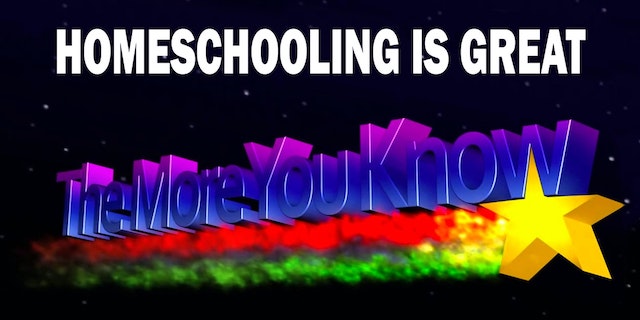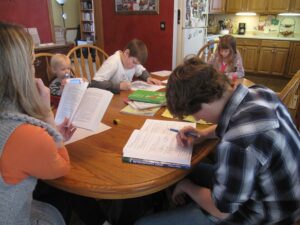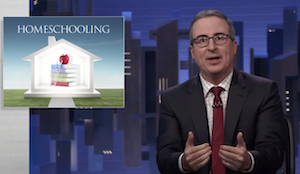New figures confirm home schooling is rocketing in popularity but a home school advocate warns that means an unhappy government will try to smash its independent-minded competitor.
 The Washington Post this week reported on eye-opening school data from 32 states and Washington, D.C. Its findings show home school students have increased by 51% since the 2017-2018 school year, defying predictions that most families would return to public schools after COVID-19 restrictions went away.
The Washington Post this week reported on eye-opening school data from 32 states and Washington, D.C. Its findings show home school students have increased by 51% since the 2017-2018 school year, defying predictions that most families would return to public schools after COVID-19 restrictions went away.
The increases are especially high in states with large urban centers but not limited to those states.
California’s five-year increase in home schooling is 78%, New York’s is 103%, and Washington, D.C.’s figure is 108%, according to the Post.
Citing the National Center for Education Statistics, the Post said the number of home schooling children has jumped from 1.5 million before the COVID pandemic to as many as 2.7 million during the current school year.
Those statistics haven’t gone unnoticed by Meg Kilgannon, an education expect at the Family Research Council. Mirroring the Post’s conclusion about the pandemic, she believes parents were watching when their children were thrown into online classes and virtual schooling.
“Moms and dads who were navigating that quickly figured out that it would just be a lot easier to do it themselves. That’s a big, big contributor to this rise in home schooling,” Kilgannon said on the Washington Watch program Wednesday.
 There are obvious benefits to home schooling such as targeted teaching strategies; lesson time streamlined to smaller numbers of kids; more time together for parents and kids; and the absence of social strategies and policies, rejected by some parents, that exists in some public schools.
There are obvious benefits to home schooling such as targeted teaching strategies; lesson time streamlined to smaller numbers of kids; more time together for parents and kids; and the absence of social strategies and policies, rejected by some parents, that exists in some public schools.
“And it’s a safe environment, generally free from bullying,” Kilgannon said.
It’s also a rising industry with very little regulation and even less consistency from state to state, the Post reported.
“They want to regulate it more and more,” Kilgannon warned. “I think you’ll see more bills introduced in state legislatures to require testing or to require certain assessments, to require additional regulations, especially in the states where there aren’t any regulations now.”
Using humor to mask your hate
The story by The Washington Post this week came on the heels of a tantrum-disguised-as-humor from John Oliver, the “Last Week Tonight” host on HBO. Oliver delivered a 24-minute monologue that mocked home schooling families and demanded more government regulation, according to an article by The Federalist.
 “When you’ve got some parents running the Homeschool Institute of Dishwashing, and others running Li’l Nazis R Us, it seems maybe the reins have gotten a little loose,” Oliver said at one point.
“When you’ve got some parents running the Homeschool Institute of Dishwashing, and others running Li’l Nazis R Us, it seems maybe the reins have gotten a little loose,” Oliver said at one point.
Oliver also took a dig at Home School Legal Defense Association, or HSLDA. That national group and its attorneys follow home school-related laws around the country, especially when proposed legislation affects home schoolers in the state. HSLDA also helps home schooling families battle public school officials when they don’t know — or don’t care — about current state laws related to home schooling.
Despite that work, or perhaps because of it, Oliver linked HSLDA with “Dissent Homeschool,” a Nazi-praising husband and wife who home school their children in Ohio.
“The HSLDA can say all that it wants that it doesn’t support Nazis or child abuse,” Oliver asserted, “but the fact is the policies that it relentlessly pushes for allow them to thrive.”
Between the Post’s statistics and Oliver’s mockery, it appears the public is being warned about home schooling and urged to laugh at its participants, too.
Schools: Show me the money
There are two main reasons Kilgannon believes the government will become more involved with home schooling: influence and money.
Federal, state and local governments provide $16,390 per student to public schools on an annual basis, according to research at EducationData.org.
Schools on average spend $16,080 per student annually, so there’s $310 per student that schools can spend as they see fit.
For every student not enrolled in public school, the school loses government money.
In addition, there are fewer U.S. students to offset those absence homes schoolers because Americans are having fewer children to sit at a school desk.
The money is important to the schools, Kilgannon says, but so is the opportunity for far-left teachers to influence innocent students.
“It’s generally about the money but it’s also about the access to children’s minds,” Kilgannon said, a point seconded by frustrated parents and parental rights groups such as Mom’s for Liberty.
With fewer children in the classroom, Kilgannon concludes, the cultural fight over what to teach future generations of children to believe will eventually reach the home schooling lessons at the kitchen table.
“The Left doesn’t have children. They have our children,” she said. “And they can’t indoctrinate our kids if we’re keeping them at home.”
Written by Parrish Alford and Billy Davis for American Family News ~ November 3, 2023
